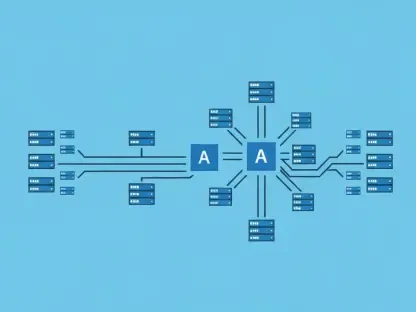More than a quarter of employees worldwide work from home nowadays. In fact, a recent study found that over 28% of the global workforce is working remotely in 2023, whereas in 2020 the percentage stood at only 20%. That’s millions of employees that now have to stay just as productive in the comfort of their living room as they would’ve been at the office, and it’s not always easy. Gone are the days when you could just pop into your colleague’s office with a quick question, or huddle in the boardroom for a few hours to crunch out a campaign. This essentially means every operation needs to be digitized for companies to work seamlessly.
To put it simply, constant emails and phone calls from managers are only going to frustrate and confuse everyone. Digitizing company workflows means they have much more control and probably more data at their disposal. Luckily, with this new and even bigger wave of remote working also comes a variety of tools to keep the train running smoothly. So, let’s dive into what makes remote team collaboration work well and how you can pick the best tools for the job so you can ditch the drama and keep your all-star team working at peak efficiency.
Core Elements of Remote Collaboration
When it comes to nailing collaborating remotely, there are a few key areas that can really make a difference. Being able to work together from all over the world doesn’t just happen naturally. There are a lot of moving parts that ensure every manager and employee is able to work with teachers and talk without glitches or interruptions.
Real-Time Communication Strategies
There’s no team without talk. And when you’re working together on a huge project, being able to communicate efficiently is probably one of the most crucial components of success. Also, being able to communicate no matter where you are also keeps morale going, and for creative teams that often work closely together, it’s the best way to bounce ideas back and forth and ensure everyone is on the same page all the time.
However, communicating too little can be just as negative as too little. Ever been in one of those group chats that never stops buzzing? It’s exhausting. That’s why it’s crucial to strike the right balance, setting aside times for focused work and times for catching up, asking questions, or just sharing a laugh. And, of course, making it super easy for team members to indicate when they’re heads down on a task or available for a chat.
Document Sharing and Collaboration Dynamics
Before remote work, collaborative projects would’ve involved everyone working on their piece of the pie separately, and then coming together at the end to piece it all together and see what fits and what doesn’t. Now, however, there are a multitude of tools your team can use to work on something at the same time, on the same page, without a hitch. While you’re busy writing up a storm, a designer can be dragging, dropping, and aligning images right there with you, and it gets the job done way faster.
You’re also able to throw in some comments, make edits, and everything else you can think of right there for everyone to see, and what’s cool is how this kind of collaboration can make your work richer and more creative. You get to tap into everyone’s unique skills and perspectives, turning solo projects into team victories. Plus, it’s a huge time-saver, cutting down on those endless email chains where documents get lost and messages get crossed.
Building a Collaborative Remote Culture
Creating a collaborative culture goes beyond just picking the right tools. You want to build an environment for your team that’s as productive as possible, as well as a space where everyone feels heard and valued. Here’s how you can do just that and cultivate a culture that champions collaboration, even from afar.
Encouraging Open Communication
Open communication is the cornerstone of any strong team, but it’s especially critical when working remotely. You should encourage your team to share not just updates on their work but also their thoughts, challenges, and even the occasional non-work-related story. This openness builds trust and helps prevent misunderstandings that can slow down progress. Establish regular check-ins and make sure everyone knows their voice is important and heard.
Creating Virtual Chill Sessions
Just because your team isn’t physically together doesn’t mean you can’t have fun and bond. Something as simple as virtual coffee breaks or online game nights are just a few ideas that can really go a long way in keeping morale high and building a stronger team. At the end of the day, it’s not all about work (crazy right?), but about creating something where everyone trusts each other completely and plays to each other’s strengths.
Setting Clear Expectations
Even with all the tools, remote work comes with its own set of challenges, so it’s crucial to set clear expectations and norms around communication, deadlines, and work hours. It’s known that 80% of employees agree that they are eight times more likely to be more engaged when their managers set clear goals for them. You want everyone to be able to stay on track with their workload and also respect each other’s personal boundaries, and these things are super important if you want the team to stay efficient in the long run.
Providing Feedback and Support
One of the best ways to ensure your team is using tools correctly is hammering on giving valuable and insightful feedback. Getting confirmation that you’re doing something right, or being able to address challenges head-on, is the best way to grow as an employee and individual. In fact, a recent study showed that employees who receive positive feedback are 69% more likely to do better work. This could mean offering training, one-on-one coaching, or simply being there to lend an ear and help brainstorm solutions.
Integrating Tools into Workflows
Finding the right tool is only the first step. Now, you need to integrate it into your workflow in a way that won’t throw the entire trolley over. If done wrong, you’ll be left with a team that’s even less connected than before you started on this journey, so incorporating this new element into the daily grind needs to be a smooth and seamless process. Here’s how to get started:
Training is a Must
Introducing a new tool to the team and just letting everyone figure it out for themselves is a recipe for disaster. Asking questions and ironing wrinkles out are a few of the many benefits you’ll enjoy when properly training everyone at the same time. You’ll also be able to explore the tool together and get to grips with all the different features and functions.
Keep an Eye on Things
After integrating a new tool into your workflow, keep an eye on how it’s being used and the impact it has on your team’s collaboration. Be open to feedback and ready to make adjustments if something isn’t working as expected. Sometimes, a tool might seem perfect on paper but doesn’t quite fit your team’s dynamic in practice. Being flexible and willing to pivot is key to finding the right tools for your team.
Final Thoughts
Running a remote team can sometimes feel like you’re juggling a bunch of invisible balls and you’re not sure where to pull tight and where to let go. Nevertheless, your team is most likely more than capable of getting the job done, and sometimes, all it takes is for you to take a step back and let the geniuses flourish.
The tools we’ve covered above play a big part in making the machine work efficiently, and integrating them into your internal processes should be a phased approach in order to ensure everyone is able to adapt well to the tech. Be sure to choose tools that work for your team and don’t just create confusion and unnecessary stress, and remember to set enough time aside, so everyone can gel with the change and get used to how things will be working from now on.
The bottom line is that the true measure of successful remote collaboration doesn’t just lie in the fancy tools, but the connections they help build and the work they enable us to accomplish together. So embrace the possibilities, be willing to adapt, and watch as your remote team achieves new heights of creativity and productivity.









